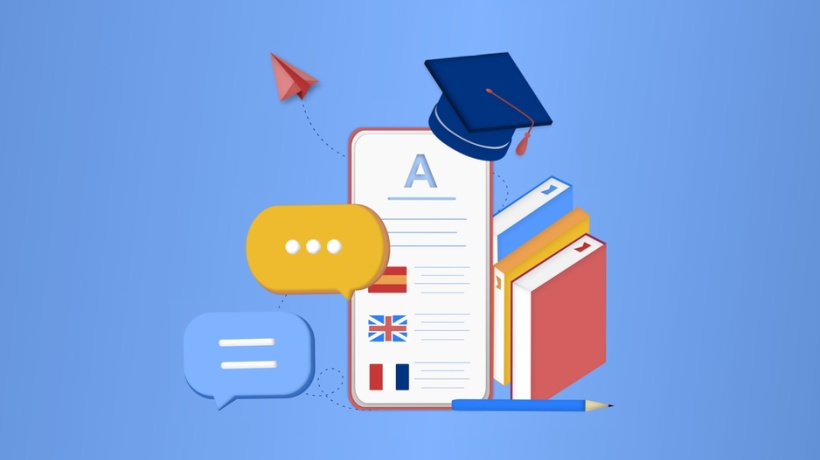About eLearning Translation
Online course providers and eLearning publishers are lucky enough to have access to a whole world of potential new learners. Yet, many companies underestimate the amount of work required in producing engaging multilingual courses that get consistent results with every audience. With eLearning translation, it's not simply the case of converting text from one language to another, but also about developing engaging learning experiences for audiences from different language and cultural backgrounds.
Translating eLearning Courses: 5 Tips
1. Working With The Right Translators
The first step to successful eLearning translation is choosing the right language professionals to work with. Many companies will need to hire technical translators who have subject knowledge about their industry and the topics covered in their training materials. A technical translator will be familiar with processes, equipment, and terminology. Technical translators also understand the nuances or contextual meanings used in specific circumstances, allowing them to capture the content accurately in each target language.
There will also be the need to work with translation specialists, such as video translators and voice-over artists—this is something we’ll come back to later. This is why it is important for companies to assess and fully understand the demands of their eLearning translation project(s) and work with the right language professionals, from day one.
2. Localizing Your Training Material For Each Audience
Language isn’t the only factor to consider when translating eLearning courses. Audiences need to engage with the produced training material, learn from it, and retain that information—something that cannot be achieved with content they struggle to relate to and connect with on a deeper level. For companies operating across multiple territories, another core aspect to consider is local laws and regulations.
Ensuring that a target audience’s local laws, rules, and working culture are always reflected in the translated version of training materials is of great importance. In covering this aspect, target audiences will find that your eLearning courses and training modules speak directly to them, allowing you to maximize engagement and relevancy for each target audience.
3. Localizing Visual eLearning Content
eLearning material, quite often, includes plenty of visual content such as videos, data visualizations, images, diagrams, etc. These elements need to be factored into the localization strategy, while a specific approach needs to be chosen and implemented for the translation of videos (more on this in the next section). Additionally, all other visuals need to be relevant to each audience, such as numerical formats. Numerical formats, like currencies, dates, and units of measurement, can vary, so eLearning publishers and companies need to localize these for each audience.
Moreover, the interpretation of symbols, colors, and other interpretational elements that could confuse audiences needs to be considered. For example, western audiences are used to seeing financial graphs with black as positive (or neutral) and red as negative, but the opposite is true in China, where red symbolizes luck and wealth, for instance.
4. Subtitles, Voiceover, Or Both?
When translating eLearning courses with video content, choosing which translation method to go for is everything. There are two main options: subtitles (and captions) or voice-overs. Both have their pros and cons, so it’s important to understand the differences between these two and make the best choice for your audience and budget.
Companies and eLearning publishers should not feel limited to choosing one or the other. When going with voice-overs, there is still the option to use subtitles to translate on-screen text, or for specific scenarios such as interview clips from external speakers. When feeling unsure about which approach to go for, it's always best to speak to professional language service providers that specialize in eLearning localization.
5. Clarity Is Essential
Clarity is essential in any form of communication that requires audiences to understand and remember specific ideas or information. This is very much the case with eLearning translation, so ensuring clarity is a top priority.
A good place to start is by keeping the wording concise and clear, while avoiding ambiguity that could get lost in translation. Puns, slang, comedy, metaphors, and pop culture references can be effective tools for engaging an audience or providing an example, but they can frequently fall flat with people lacking the necessary cultural background to understand them fully. So, these should be localized or used sparingly.
Humor rarely translates well between cultures; what is entertaining and hilarious in one may be hurtful or perplexing in another. Again, using creative devices and language should be done with caution while supported by advice provided by eLearning language specialists, who can localize and transcreate such nuances and aspects accurately, and with the right cultural sensitivity required.
Conclusion
As with any translation project, it is important that each language version of the produced eLearning courses and training modules are faithful to the original. However, specific factors relevant to each target audience (and the location they work in) need to be considered, to ensure that everything in your training materials is 100% relevant, accurate, and culturally appropriate. If your eLearning translation strategy isn’t getting the results you need, it is time to speak to a language service provider that specializes in this service.
Further Reading:
- A Guide to E-Learning Translation & Localisation
- eLearning And Localization: The Most Common Issues Businesses Usually Face
- How Can You Translate Custom E-Learning Content?










